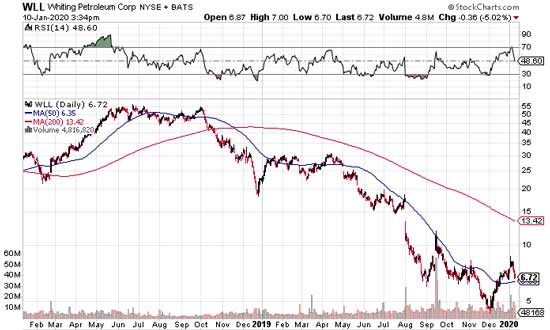The law of averages says stocks will eventually find their "fair value." But in the short term, you can find stocks trading far above or below their fair value.
And when perception and reality say different things, we can find opportunities. That's especially true when it comes to options trades.
Sometimes it's news from the company, like earnings, that jolts investors to buy or sell. Or it could be an economic report showing strength or weakness in a sector. Investors can easily get a bit too excited either way, and the stock price moves a lot more than it "should."
Right now, Money Morning Technical Trading Specialist D.R. Barton, Jr., sees a big opportunity in a stock that rallied on hope but just does not have the financial juice behind it to sustain its price gains.
We'll show you exactly what's happening and how you can use a specific options trade to cash in on the market's overreaction...
Riding the Energy Wave
There is an old saying on Wall Street that a rising tide raises all boats. That means good news in the market tends to lift all stocks higher. After all, that's what a bull market is all about.
But that bit of conventional wisdom is not quite true. A rising tide might lift all boats, but not all will stay afloat. Just like in the real world, not every boat is seaworthy. In other words, not every company is strong enough to keep rallying once the initial surge for the market - or the sector - is over.
The energy sector was one of last year's worst performers. However, late in the fourth quarter, oil prices topped $60 per barrel. Predictably, energy stocks rallied, too.
And then came the U.S. airstrike on Jan. 3, which killed top Iranian general, Qassim Soleimani, sending oil prices spiking 4% higher. This rising tide sent energy stocks to their highest levels since September. Some energy sectors, like oil services, actually outperformed the S&P 500 in December.
While the rising tide lifted energy stocks, not all of them earned the boost.
And reality is going to come knocking for one shale oil producer.
The U.S. shale oil industry revolutionized the crude oil market. And it was a major - if somewhat behind-the-scenes - driver of the recovery in the U.S. economy since 2009. Today, two-thirds of U.S. oil production comes from shale.
But as D.R. put it, the story of U.S. shale oil emergence is littered with haves and have-nots.
The reality gap is happening between what you're being told about U.S. fracking and what's really happening on the ground. In fact, some companies could be in big trouble because of the way they raised money to finance their wells.
And that's how we can make big money going against prevailing wisdom and the excitement surrounding shale oil.
Profiting with an Easy Options Trade
[mmpazkzone name="in-story" network="9794" site="307044" id="137008" type="4"]
The problem is that fracking is more expensive than anyone thought.
And this will hit smaller, less cash-rich oil companies hard. These are often the same companies that pioneered shale fracking, and they did so using loans. With their production not hitting estimated targets, cash flow to pay the interest on the debt drops, and they're in trouble.
Buying puts on these companies can be a low-cost way to profit from their fall. And the recent oil price spike, even though it has backed down a bit, is giving us an even better entry into this trade.
Whiting Petroleum Corp. (NYSE: WLL) has been one of the "have-nots" for the last year and a half. The company is in the wrong region (less productive shale basin) and on the wrong side of the decline curve. It's cutting maintenance capital expenditures (trading short-term gain for long-term pain), and it has a horrible debt position.
It pays no dividends, as it currently operates at a loss. Earlier this year, The Wall Street Journal reported that new wells in the four largest U.S. oil regions are expected to produce 10% less oil and gas over their lifetimes as claimed by fracking companies. The potential shortfall represents about 1.4 billion barrels over 30 years, or more than $60 billion at current prices.
Whiting trades at just over $7 per share, down from over $50 in 2018. And in 2014, it traded at a split adjusted $370. As you can see in the chart below, shares have been sliding for over a year. Its recent surge in December won't last. In fact, it's already starting to slip again.

Look for puts just out of the money expiring in the next six months. They can pay off in a big way once the euphoria over oil prices falls and Whiting is exposed as a clunker.
This Fast Money Move Could Make You $4,238
America's No.1 Pattern Trader is going live on camera to show readers how they can make hundreds, even thousands, of dollars in extra income.
You see, he's found a way to predict the future buying patterns of nearly every stock on the market. And with this trick, he's lining up major payday appointments left and right.
We're talking about cashing in on some of the biggest stocks on the market: Netflix, Apple, Facebook, even Amazon.
The best part is this options trading strategy is super easy to understand and even easier to put into action.
All it takes is three simple steps and a few clicks of your mouse, and you're on your way to what could be life-changing wealth...


